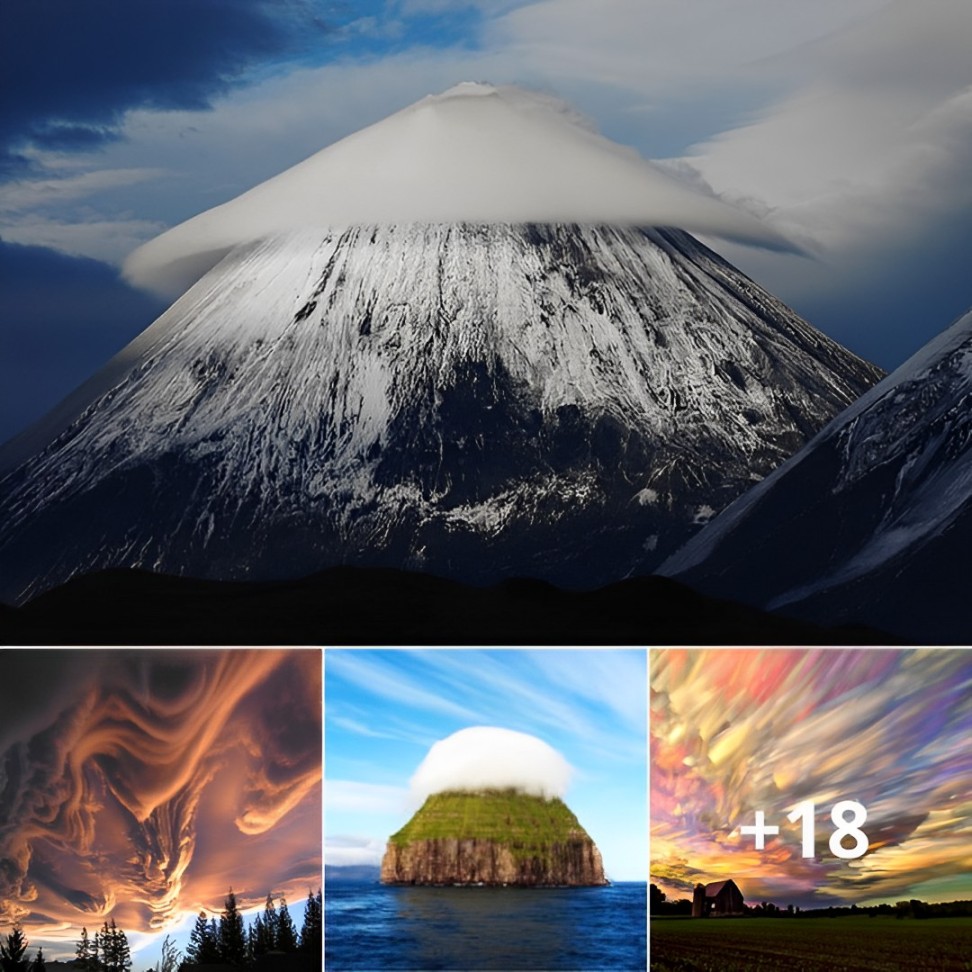Nature never fails to mesmerize us with its awe-inspiring phenomena, and one such captivating spectacle is the halo. Far beyond a mere optical illusion, halos adorn the sky with their ethereal beauty, leaving observers in awe of their enchanting presence.
 Long exposure of a night-time lunar halo display, including an upper tangent arc, 22° halo, and paraselenic circle. Image credit: Mikhail Kapychka
Long exposure of a night-time lunar halo display, including an upper tangent arc, 22° halo, and paraselenic circle. Image credit: Mikhail Kapychka
Have you ever seen a ring of light around the Sun or the Moon? If you have, you might have witnessed a halo, an atmospheric optical phenomenon that occurs when light interacts with ice crystals in the sky. Halos can have different shapes and colors, depending on the type and orientation of the ice crystals and the angle of the light source.
One of the most frequent and well-known halos is the 22° halo, which appears as a circular ring of light with an apparent radius of 22° around the Sun or the Moon. The 22° halo is caused by refraction of light through hexagonal ice crystals that are randomly oriented in thin cirrus or cirrostratus clouds. The refraction splits the light into its component colors, with red being closest to the center and blue being farthest from the center of the halo. The 22° halo can sometimes be accompanied by other features, such as sun dogs (bright spots on either side of the halo), upper tangent arcs (curved arcs touching the top of the halo), or circumzenithal arcs (upside-down rainbows above the halo).
 22° halo around the Sun, above PT Semen Padang building at Padang, Indonesia. Image credit: Titoreds
22° halo around the Sun, above PT Semen Padang building at Padang, Indonesia. Image credit: Titoreds
Another type of halo that can be seen around the Sun or the Moon is the light pillar, which appears as a vertical column of light extending above or below the light source. Light pillars are caused by reflection of light from flat ice crystals that are near horizontal in the air near the ground or in high clouds. The shape and color of the light pillar depend on the position and distance of the observer, the height and density of the ice crystals, and the brightness and size of the light source.
 Complex halo display (22° halo, sun dogs, upper tangent arc, upper and lower Sun pillar, parhelic circle, supralateral arc) observed in Les Ménuires (elevation ≈2200 metres), Rhone-Alpes, France. Image credit: Gabor Szilasi
Complex halo display (22° halo, sun dogs, upper tangent arc, upper and lower Sun pillar, parhelic circle, supralateral arc) observed in Les Ménuires (elevation ≈2200 metres), Rhone-Alpes, France. Image credit: Gabor Szilasi Sun pillar and upper tangent arc over the San Francisco bay. Image credit: Toddschulte
Sun pillar and upper tangent arc over the San Francisco bay. Image credit: Toddschulte
There are many other types of halos that can be observed in different atmospheric conditions, such as Bottlinger’s rings, Parry arcs, sun crosses, and more. Each one has its own unique appearance and formation mechanism, involving different combinations of refraction and reflection by ice crystals.
 A halo display observed over the South Pole. Image credit: Lt. Cindy McFee
A halo display observed over the South Pole. Image credit: Lt. Cindy McFee
Throughout history, halos have held great significance in various cultures and traditions. Often associated with divine or supernatural forces, they have been depicted in ancient art and religious symbolism as symbols of purity, enlightenment, or otherworldly presence.
One of the oldest known depictions of a halo display, including a pair of sun dogs, is a painting called Vädersolstavlan (Swedish; “The Sundog Painting”, literally “The Weather Sun Painting”), which is mostly known and often quoted for being the oldest color depiction of the city of Stockholm. During the morning of April 20, 1535, the city experienced a spectacle where the sky was adorned with numerous white circles and arcs that intersected the heavens. Moreover, additional suns, commonly known as sun dogs, manifested themselves around the sun. This breathtaking phenomenon persisted for a duration of two hours.
 The so-called “Sun Dog Painting” (Vädersolstavlan) depicting Stockholm in 1535 and the celestial phenomenon at the time interpreted as an ominous presage. Image credit: Jacob Heinrich Elbfas
The so-called “Sun Dog Painting” (Vädersolstavlan) depicting Stockholm in 1535 and the celestial phenomenon at the time interpreted as an ominous presage. Image credit: Jacob Heinrich Elbfas
Halos are fascinating examples of how nature can create beautiful and complex optical effects with simple ingredients. As we gaze at the sky and witness these celestial spectacles, we are reminded of the intricate wonders that surround us. So, let’s indeed look up, embrace the magic above, and immerse ourselves in the celestial dance of halos!






